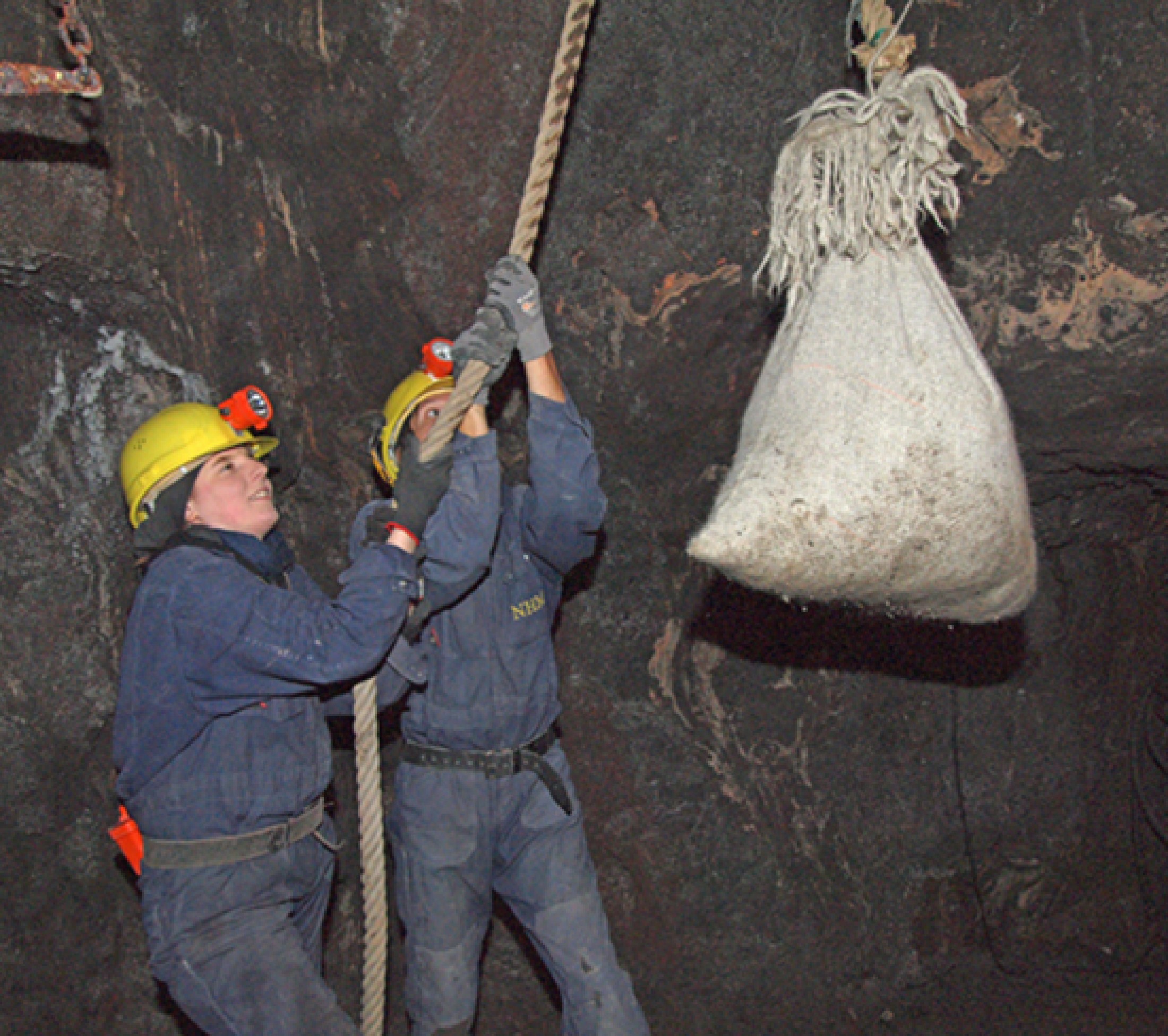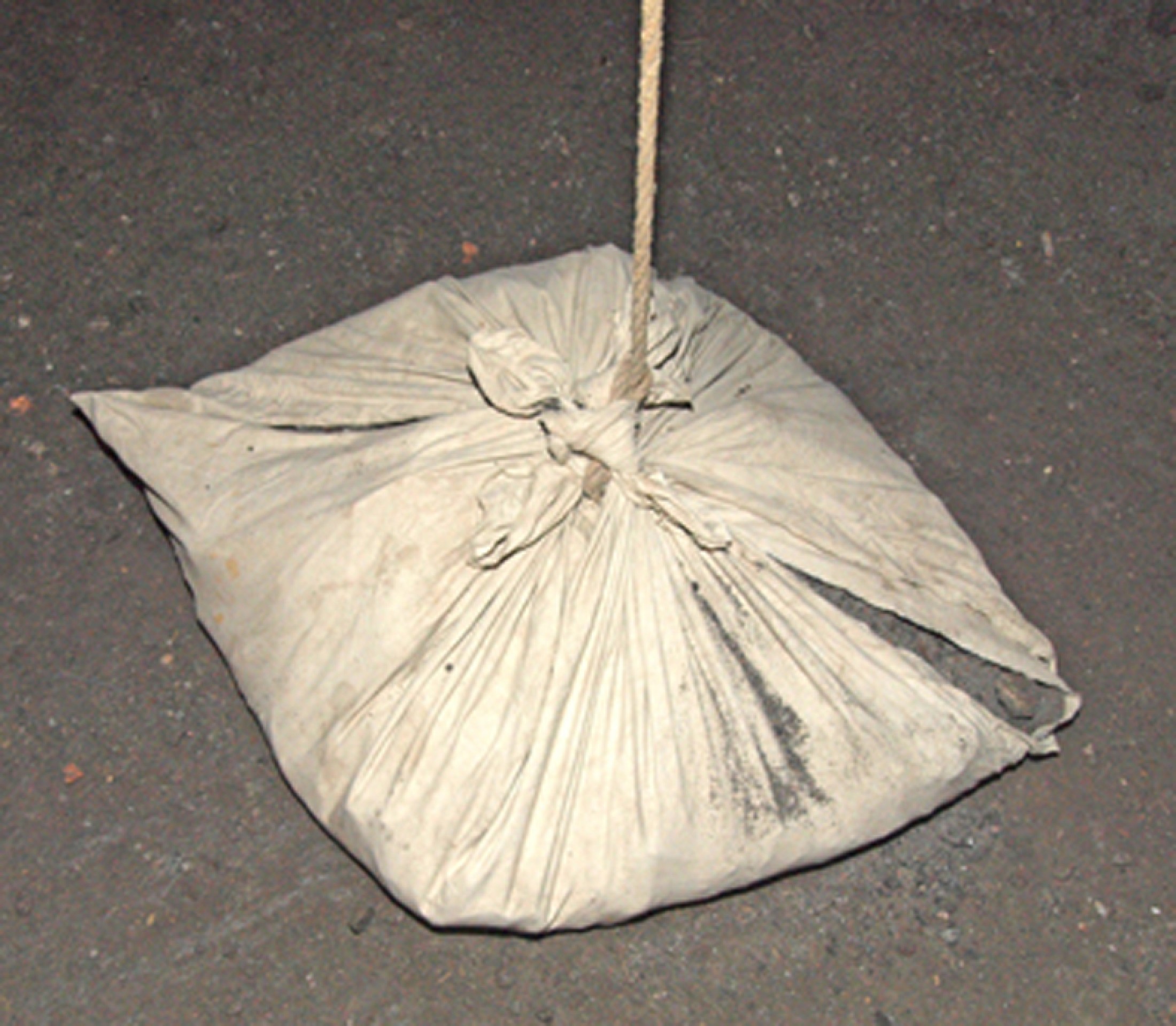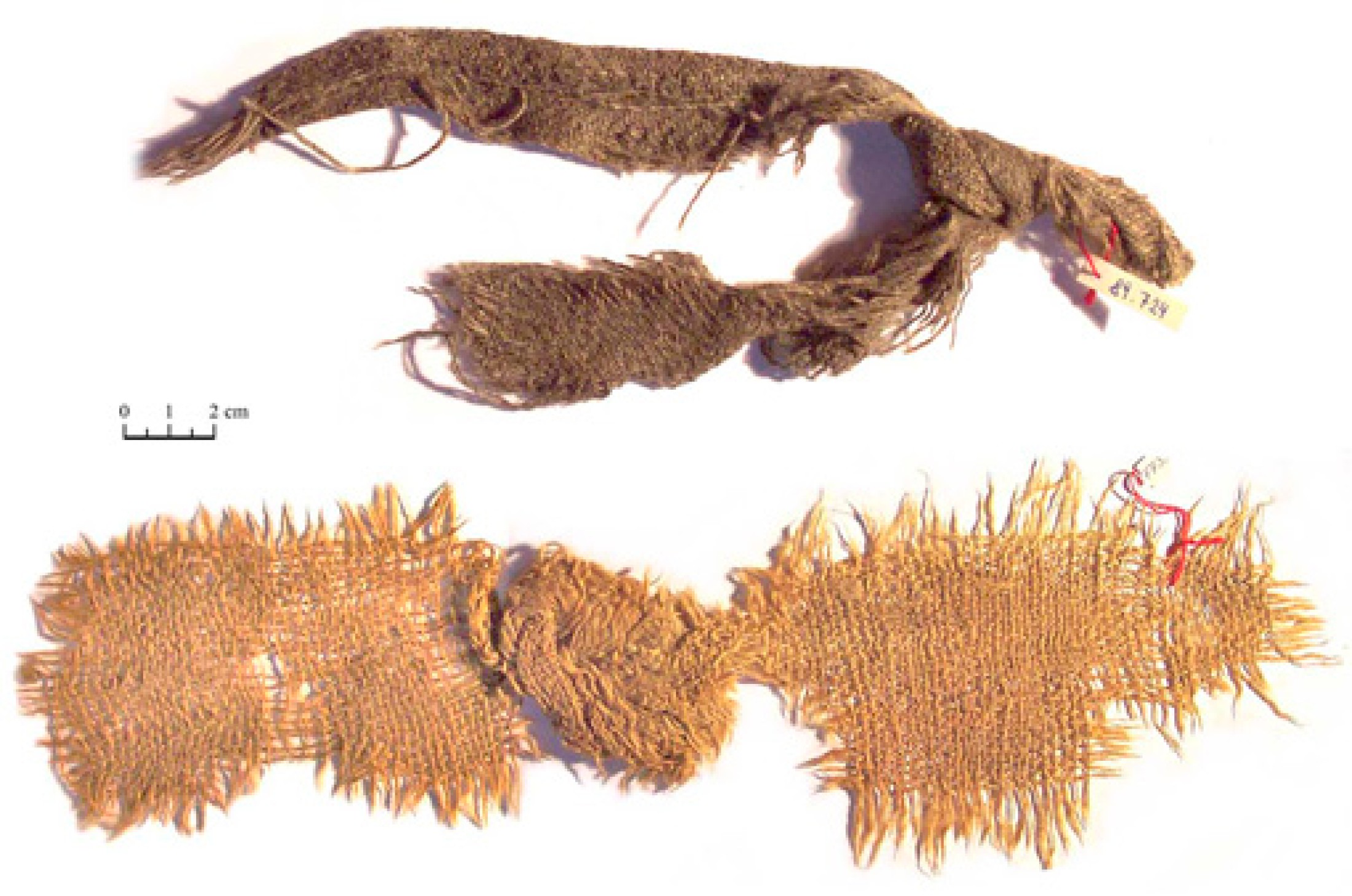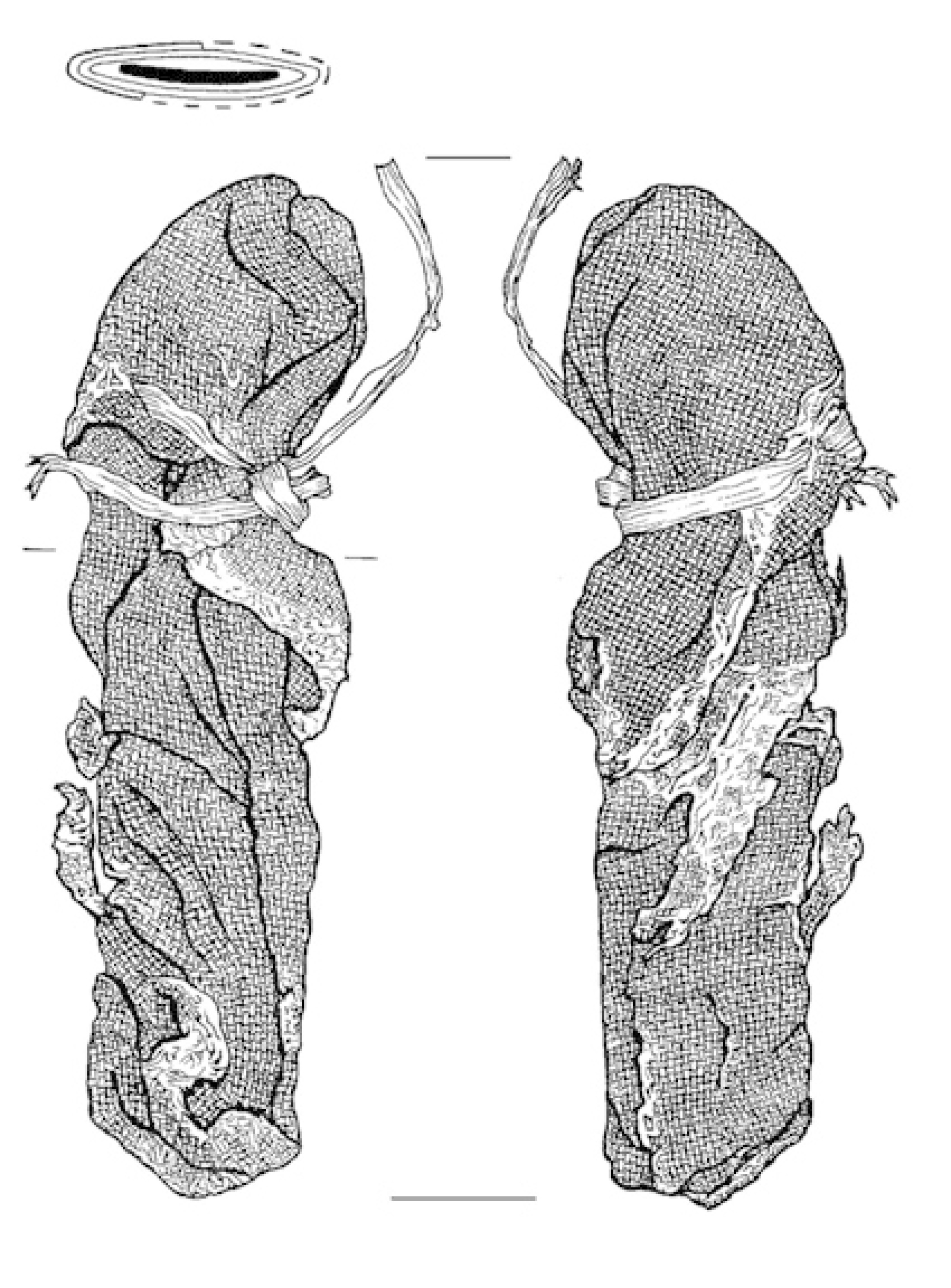Uses of textiles found in the mines
There are many different reasons why materials were brought down into the mines and left behind underground together with other items. Rough materials found in the Bronze Age Christian von Tuschwerk mine are probably the remains of woolen sacks used to transport salt, while the fabrics found in the North Group (Bronze Age) and the East Group (Iron Age) are most likely torn pieces of clothing or other textiles used in everyday life. Most of the materials, particularly those from the Hallstatt Period, were torn into strips and used down in the mines to tie items together.Bronze Age: Woolen sacks for transporting salt
Iron Age: Recycling old textiles
Use of old textiles to tie objects
Use of old textiles for cleaning and washing
Use of old textiles for medical purposes in Dürrnberg
Bronze Age: Woolen sacks for transporting salt
There are interesting signs that woolen sacks were used to transport salt in the Bronze Age mines in Hallstatt. Fragments of rock and salt would be loaded into these sacks and pulled up to the surface via the vertical shafts.The sacks all share a number of characteristics. They are made of very thick, strong material using plain weave with woolen threads measuring 1.5 to 2.5mm in thickness. In some cases the surface is felted (possibly through yarn fulling) in order to make the material stronger. The edges of the sacks are reinforced with robust edges or strong rolled seams, finished with buttonhole stitch. There is convincing evidence that this material was specifically made in order to produce such woolen sacks. Through their use for transport purposes they played an important role in the organization of labor in the Bronze Age mines of Hallstatt.
Iron Age: Recycling old textiles
By the Iron Age, mining techniques had changed. Instead of being broken into small pieces and transported using carrysacks, the salt was removed from the rock in large bars and transported using a different method. That is why no traces of woolen sacks have been found dating to the Iron Age. The majority of the Iron Age textiles found in the mines were probably not originally made for the purpose for which they were used below ground. Most of these finds are very fine fragments of high-quality material with attractive patterns that would have first been used to make clothing and then recycled for use in the mines.Such evidence of materials being recycled shows that textiles were highly valued and used for as long as possible. Torn into pieces, the clothes were used in the mines and left behind in the excavated material. Since the discovery of the first textiles in 1849, researchers have wondered whether these could have come from the clothing worn by the miners while working. However, it has been shown that during the Iron Age the miners did not work in narrow pits but in larger mining halls. Therefore, there was little chance of them catching and tearing their clothes while at work. Researchers currently believe that the textiles were collected in the settlement above ground and then transported down into the mine for use.
Use of old textiles to tie objects
Strips of material have been found both in Hallstatt and Dürrnberg. Some have knots, while others are made up of two pieces tied together. There are also a number of knots made using bast fiber. Such strips of material were obviously recycled and re-used to tie items together. The miners in Hallstatt and Dürrnberg employed mainly string and rope made of tree bast and grass to tie objects together. If these were not available, they would use strips of material, leather and young twigs which were still supple.Use of old textiles for cleaning and washing
It is likely that recycled materials were also used in the mines for cleaning items and washing the hands and face, maybe even as a kind of toilet paper. However, no clear evidence has been found for this use of material as toilet paper despite the fact that human excrement has been discovered in the salt mines.Use of old textiles for medical purposes in Duerrnberg
It is particularly interesting that in the Duerrnberg mine direct evidence has been found indicating that textiles were used for medical purposes. Archaeological excavations at the Ferro-Schachtricht revealed a cloth bundle which, at first sight, appeared anything but extraordinary. Upon closer inspection, researchers realized that this soft, light linen was rolled together into a finger-like shape held together with a strip of bast fiber. This 11cm object is probably a finger bandage. Remains of plants were also found in the bandage. These may have been added in order to stem the bleeding or accelerate the healing process.(Groemer, K. – Mautendorfer, H. – Loew, C.)





